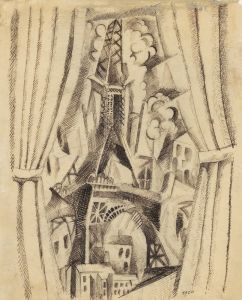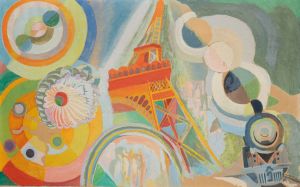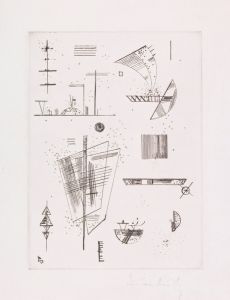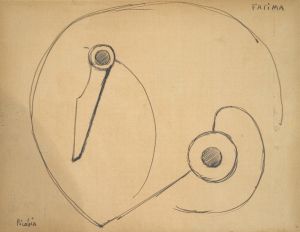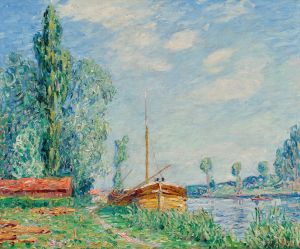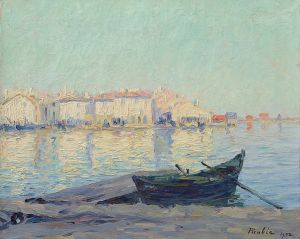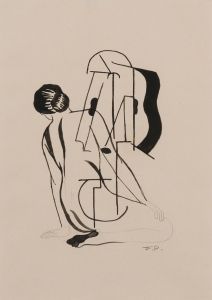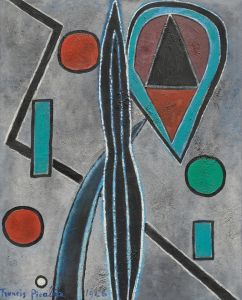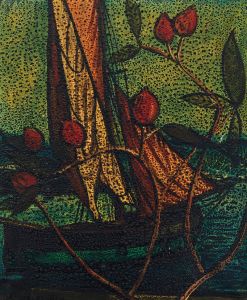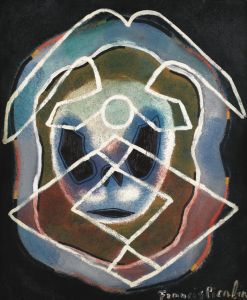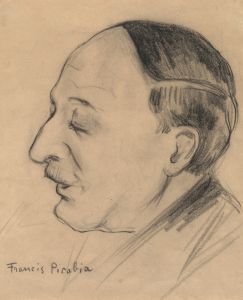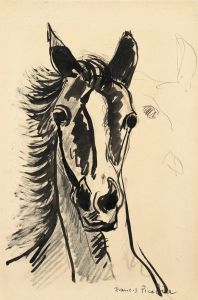
Boucles d’oreille noires
A hand-painted replica of Francis Picabia’s masterpiece Boucles d’oreille noires, meticulously crafted by professional artists to capture the true essence of the original. Each piece is created with museum-quality canvas and rare mineral pigments, carefully painted by experienced artists with delicate brushstrokes and rich, layered colors to perfectly recreate the texture of the original artwork. Unlike machine-printed reproductions, this hand-painted version brings the painting to life, infused with the artist’s emotions and skill in every stroke. Whether for personal collection or home decoration, it instantly elevates the artistic atmosphere of any space.
Francis Picabia was a French avant-garde painter, poet, and typographist, associated with a variety of artistic movements including Impressionism, Cubism, Dada, and Surrealism. He was known for his diverse and experimental approach to art, often challenging traditional boundaries and exploring new forms of expression. One of his works, "Boucles d’oreille noires" (translated as "Black Earrings"), reflects his innovative spirit and his engagement with the avant-garde art scene of the early 20th century.
"Black Earrings" is a painting that exemplifies Picabia's transition from Impressionism to more abstract and avant-garde styles. While specific details about the painting's creation and its exact stylistic elements are not extensively documented, it is known that Picabia's work during this period was characterized by bold experimentation and a departure from conventional artistic norms. His involvement with the Dada movement, which he co-founded, was particularly influential in shaping his approach to art during this time.
The Dada movement, emerging during World War I, was a reaction against the perceived rationalism and nationalism that many believed had led to the conflict. It embraced chaos, irrationality, and a rejection of traditional aesthetics. Picabia's work often embodied these principles, using humor, irony, and a mix of media to challenge viewers' perceptions and provoke thought. "Black Earrings" can be seen as part of this broader context, where Picabia was exploring new visual languages and questioning the role of art in society.
Picabia's art was also marked by his interest in mechanical imagery and the intersection of man and machine, a theme that recurred in many of his works. This fascination with machinery and technology was reflective of the rapid industrialization and technological advancements of the early 20th century. While it is not explicitly clear if "Black Earrings" incorporates these elements, Picabia's broader body of work during this era often did.
Throughout his career, Picabia was known for his ability to reinvent himself and his art, moving fluidly between styles and movements. This adaptability and willingness to experiment made him a key figure in the development of modern art. His work, including "Black Earrings," continues to be studied and appreciated for its innovative approach and its contribution to the evolution of contemporary artistic practices.
In summary, while specific details about "Boucles d’oreille noires" are limited, it is a part of Francis Picabia's diverse and influential oeuvre. The painting reflects his engagement with avant-garde movements and his commitment to challenging artistic conventions. Picabia's legacy as a pioneer of modern art remains significant, and his works continue to inspire and provoke discussion among artists and scholars alike.





